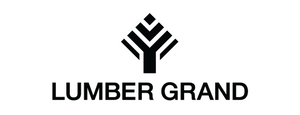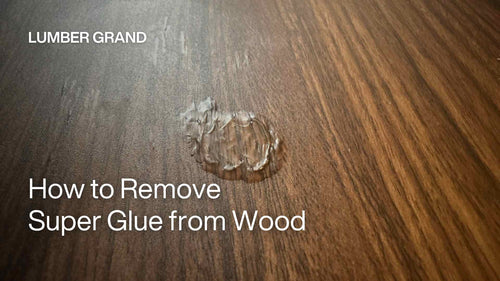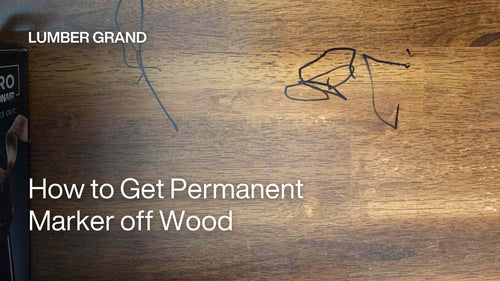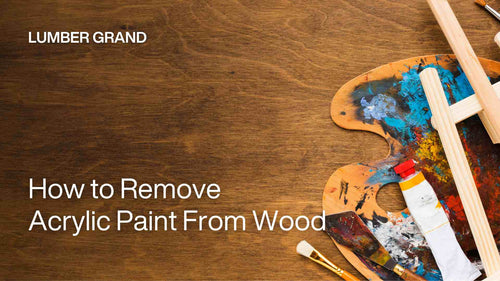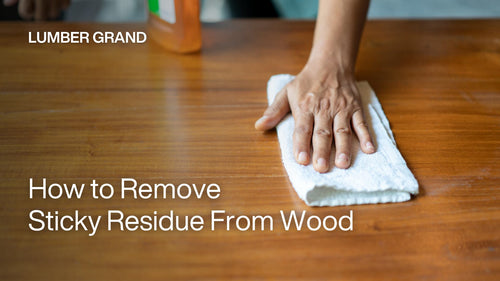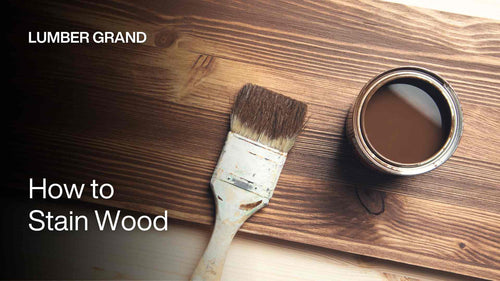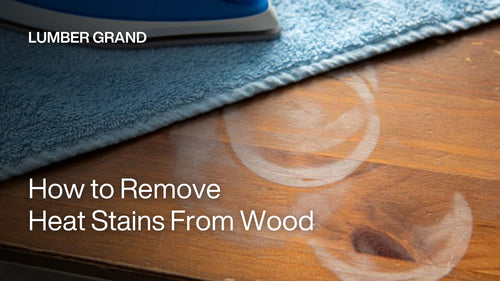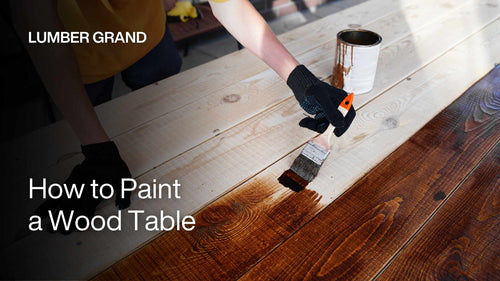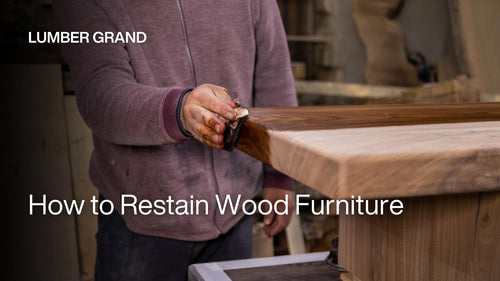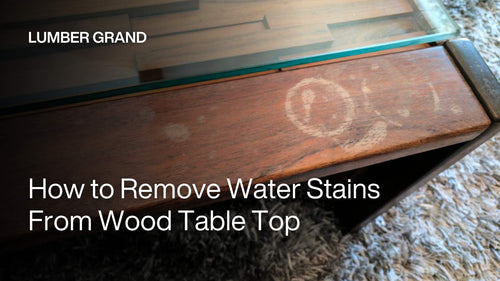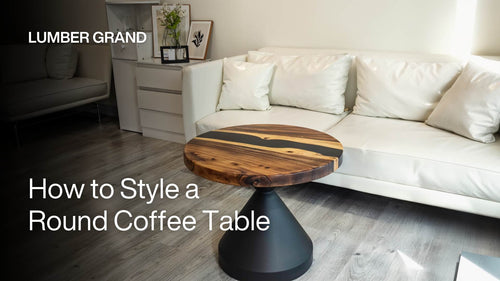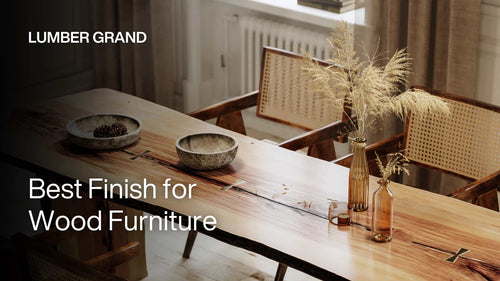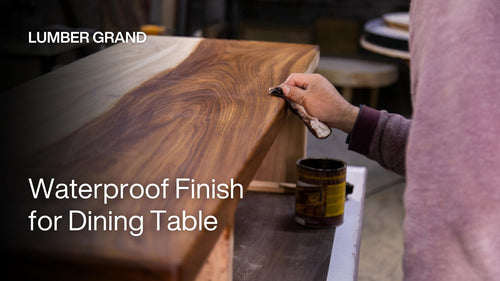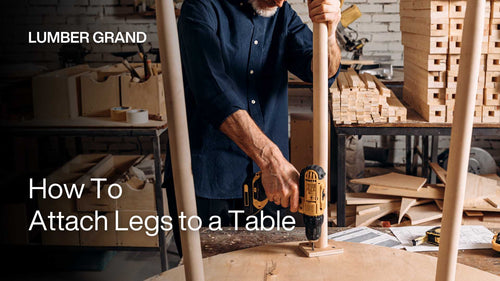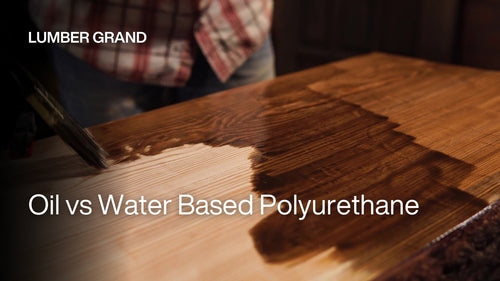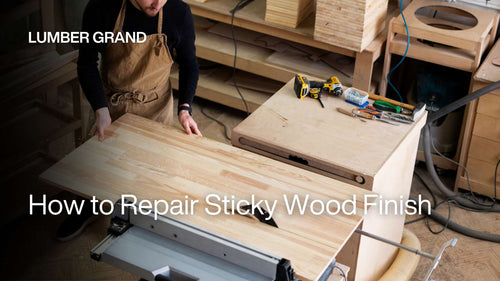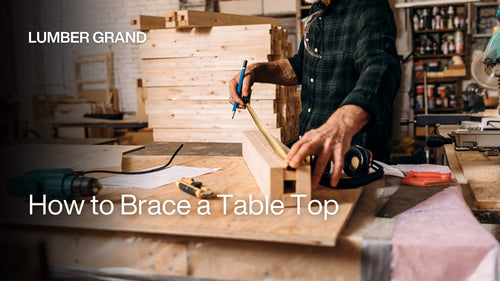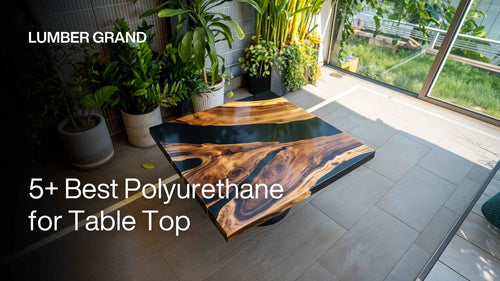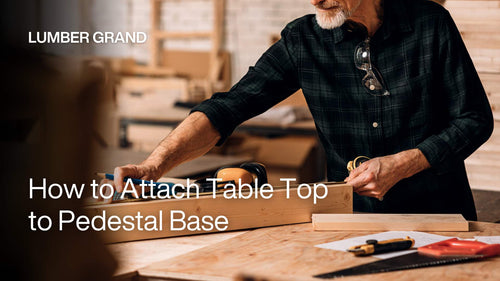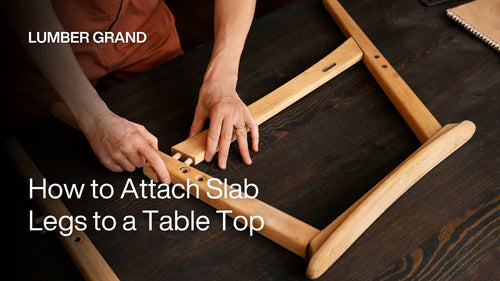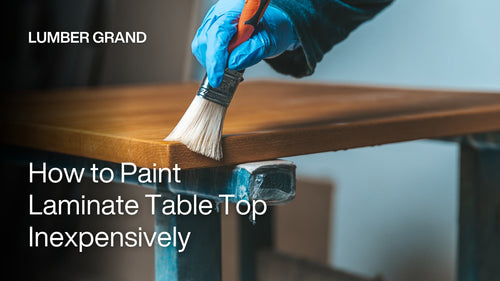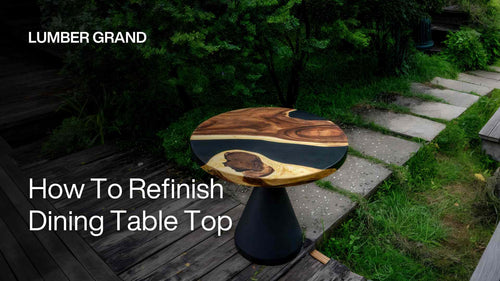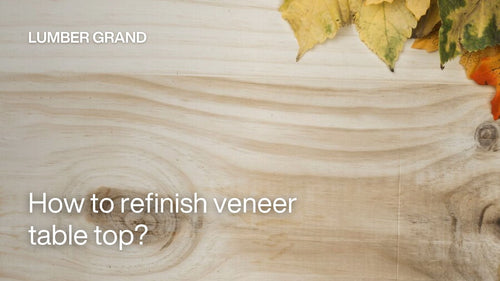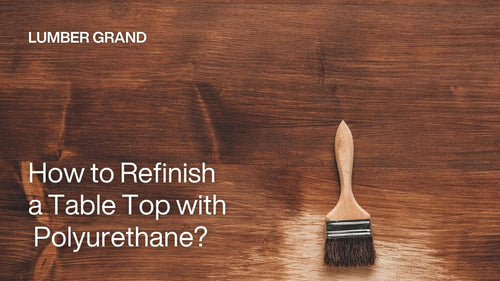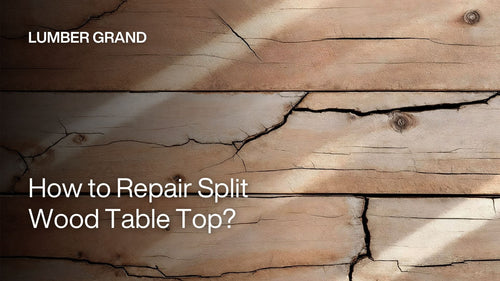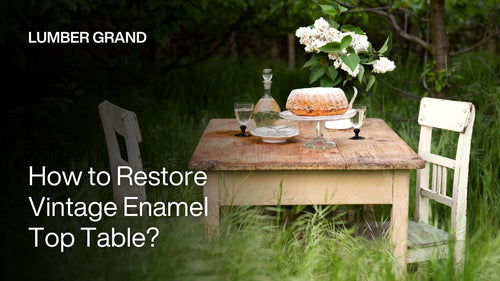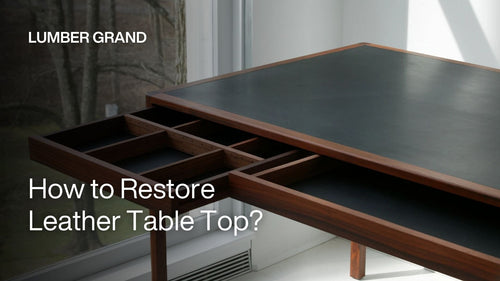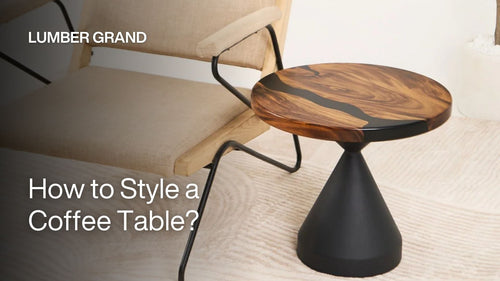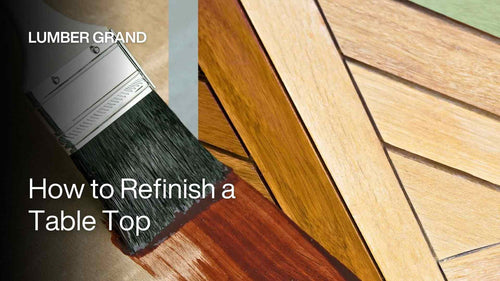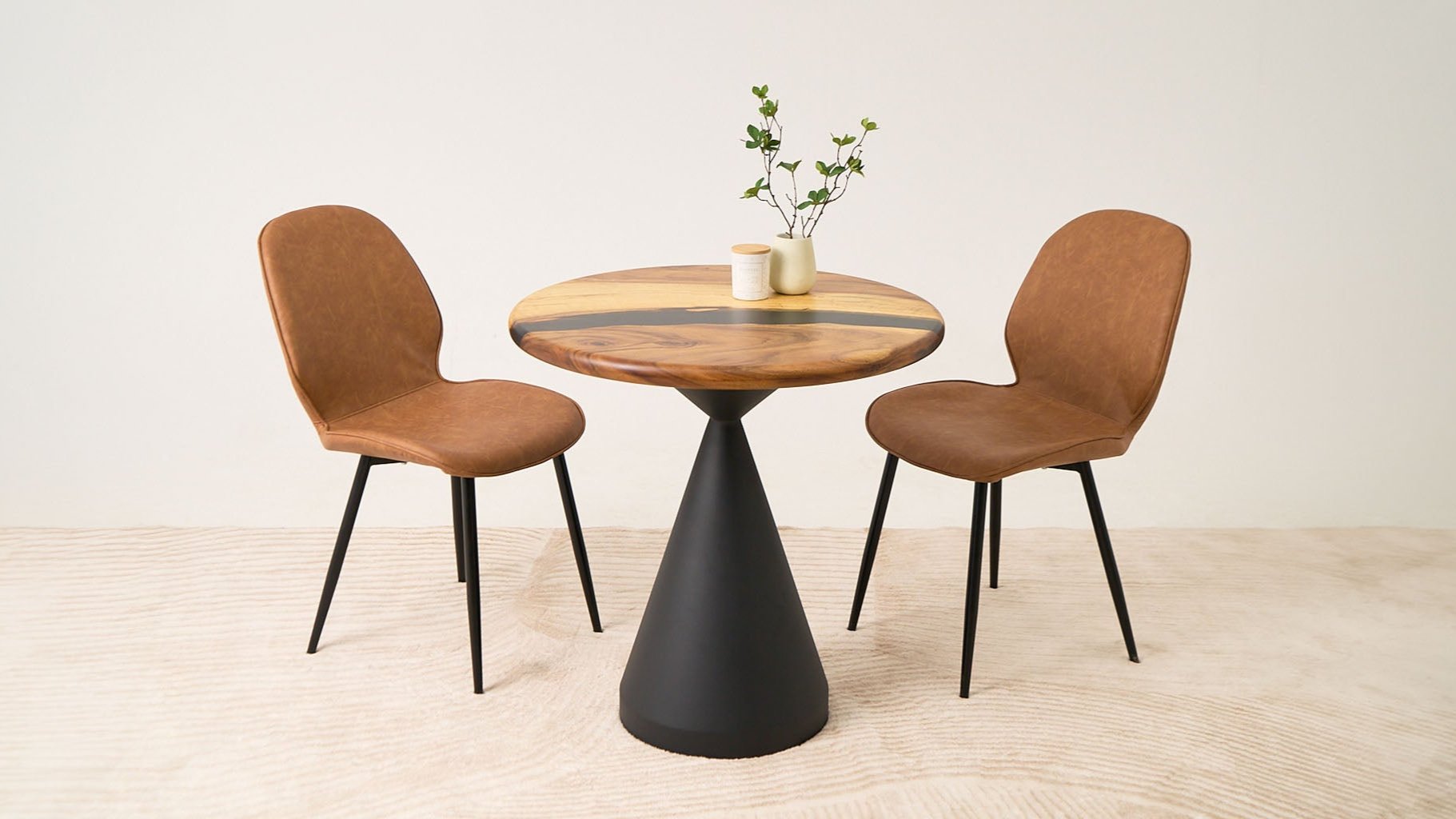Permanent marker isn't as permanent as you think. Learning how to get permanent marker off wood surfaces, desks, and cabinets is easier than you'd imagine. The good thing is that you likely already have the right supplies at home. Daily household products work surprisingly well on marker stains.
Lumber Grand is going to walk you through 10 different ways on how to get permanent marker off wood table. Some are gentler, perfect for antique furniture and lacquered wood. Others tackle tough stains on the dining table, bedroom dresser, or kitchen cabinet. Pick what makes sense for your situation. Read more!
How to Get Sharpie Off Wood: Quick Answer Table
The dry erase marker method is what most people advise for, whether they're DIYers or professionals. It works, it's safe for most finishes, and it's hard to mess up. Start with that one. Chances are good you won't need anything stronger.
|
Wood Type |
Safe Marker Removal Methods |
Skip |
|
Finished/Varnished Wood |
Rubbing alcohol (gentle), dry-erase marker, and hand sanitizer |
Excessive alcohol, aggressive scrubbing |
|
Lacquered Wood |
Dry-erase marker, gentle hand sanitizer |
Acetone, strong alcohols |
|
Painted Wood |
Hairspray, dry-erase marker, hand sanitizer |
Nail polish remover (dissolves paint) |
|
Unfinished/Raw Wood |
Fine-grit sandpaper, baking soda paste |
Hand sanitizer (glycerine stains), alcohol-based methods |
|
Stained Wood |
Test first! Dry-erase marker, gentle alcohol |
Aggressive solvents |
You might like: 8 Best Wood for Table Top
10 Best Methods on How to Get Permanent Marker off Wood: DIY at Home
Most people search for “how to get permanent marker off wood without sanding”, and honestly, Lumber Grand thinks that's smart. Sanding should be your absolute last resort because it:
-
Removes protective finishes (varnish, lacquer, polyurethane)
-
Creates uneven surfaces that need complete refinishing
-
Damages the wood table, desk, or cabinet appearance permanently
-
Requires professional-level skills to restore
Instead, let’s try these 9 sanding-free methods first:
1. Rubbing Alcohol — Best for Wood Tables & Desks
Best for: Most finished wood surfaces, furniture, and table top with polyurethane finishes.
Rubbing alcohol (isopropyl alcohol) is one of the most potent solutions for removing permanent markers from wood. The ink of many markers, Sharpie included, is composed of alcohol-based solvents.
Hence, when you apply isopropyl alcohol to the stain, it’ll:
-
Dissolve those same solvents
-
Break down the pigment
-
Lift it off the surface

Rubbing alcohol removing permanent marker stain from wood table
Photo: Webmd
How to get permanent marker off wood table step by step:
-
Step 1: Pour rubbing alcohol onto a clean, dry cotton cloth or paper towel
-
Step 2: Dab (NO rub) the stained area gently
-
Step 3: Let the alcohol sit for a few seconds to dissolve the ink
-
Step 4: Continue dabbing until you see the marker transferring to your cloth
-
Step 5: Wipe the area with a slightly damp cloth to remove residue
-
Step 6: Pat dry with a clean towel
Note: Rubbing alcohol can dull high-gloss finishes if you use it too much. It’s recommended to test rubbing alcohol on a hidden spot first, especially if your furniture has a shiny finish.
2. Dry Erase Marker — Best for Lacquered Wood
Best for: Painted wood, opaque-stained surfaces, and lacquered wood finishes that might be damaged by alcohol.
Using more markers to remove the marker? However, it's a nifty trick for how to get Sharpie off wood table tops. The idea behind it is that the dry erase markers contain solvents that reactivate permanent marker ink. So, when you draw over permanent marker with dry erase, both inks lift away together when wiped.

Dry erase marker can easily get Sharpie off wood desk
Photo: Alamy
How to get permanent marker off of lacquered wood:
-
Step 1: Take a dry-erase marker in any color
-
Step 2: Completely trace over the permanent marker stain
-
Step 3: Immediately wipe away with a dry paper towel or cloth
-
Step 4: Both the dry-erase and permanent markers should lift together
-
Step 5: Repeat if necessary for stubborn stains
User testimonial: "Use dry erase marker to scribble over it. Then wipe away, it will take care of it. I use it at work to reuse folder separators." This comment received 106 upvotes.
Note: Not recommended for unfinished or raw wood, as the dry erase marker will soak in and create a worse stain.
3. Hand Sanitizer Gel — Remove Sharpie from Wood Doors & Desks
Best for: Finished wood surfaces, wood doors, and family spaces where a less aggressive cleaning solution is desired.
How to get permanent marker off wood desk surfaces without harsh chemicals? Hand sanitizer is your 3rd answer. In fact, most hand sanitizer gels contain 60 — 70% alcohol. That’s why it’s effective at dissolving permanent marker ink while being gentler than pure rubbing alcohol.

Hand sanitizer gel removing permanent marker from wood door
Photo: Weldricks Pharmacy
How to get permanent marker off wood door in just five simple steps:
-
Step 1: Squeeze a small amount of hand sanitizer onto the stain
-
Step 2: Rub gently with a soft cloth in circular motions
-
Step 3: The marker begins to lift immediately
-
Step 4: Wipe clean with a damp cloth
-
Step 5: Dry thoroughly
User testimonial: "Hand sanitizer did wonders when my 3 year old found a sharpie and drew a big lovely picture on my floor. Didn't affect the finish at all and took almost no setting time to wipe it away as well."
Note: Hand sanitizer contains glycerine as a moisturizer, which can stain and darken unfinished bare wood. You should only use it on finished surfaces.
4. Toothpaste with Baking Soda — Best for Wood Cabinets
Best for: Sensitive finishes and wood cabinets in kitchens or bathrooms
In case you’re looking for alcohol-free solutions or dealing with delicate finishes, this gentle abrasive method can really help you in finding how to remove permanent marker off wood without alcohol.
Non-gel toothpaste is made up of very subtle abrasives (mostly either calcium carbonate or silica), which slowly remove marker stains. Besides, it will not harm the wood surface beneath the stain.

Toothpaste with baking soda cleaning marker off wood cabinet
Photo: YouTube | Ambercleans7350
Below is how to get permanent marker off wood cabinets:
-
Step 1: Choose a white, paste toothpaste (NOT gel) that lists baking soda in the ingredients
-
Step 2: Apply a small amount to a cotton swab or makeup removal pad
-
Step 3: Rub the stain lightly, moving in the direction of the wood grain
-
Step 4: Continue rubbing gently for 30 — 60 seconds
-
Step 5: Wipe away residue with a damp cloth
-
Step 6: Repeat if necessary
5. Baking Soda Paste — Chemical — Free Option
Best for: Finished wood, people avoiding chemicals, or if you have allergies to cleaning products
You may have baking soda sitting in your pantry right now. Turns out, it's great for getting marker off wood. The powder works like very fine sandpaper. It scrubs away the ink without hurting your furniture's finish. Plus, there's nothing toxic about it.
Here is how to get Sharpie out of wood:
-
Step 1: You add 2 tablespoons of baking soda and 1 tablespoon of water. Mix them together until they look like thick toothpaste.
-
Step 2: Spread that paste over your marker stain
-
Step 3: Take a soft cloth and rub the paste in circles, easy does it.
-
Step 4: Keep rubbing for 1 — 2 minutes
-
Step 5: You use a damp cloth to wipe all that paste off
-
Step 6: Get a dry towel and wipe the spot until there's no moisture left
-
Step 7: If you still see the marker on wood, do it again. Sometimes stubborn marks need a second round.
Related table restoration blog: How To Remove Water Stains From Wood Table Top
6. Magic Eraser (Melamine Foam) — Best for Wood Paneling
Best for: Small spots on finished wood, wood cabinets, wood paneling, and furniture with durable polyurethane finishes.
Magic Erasers are weirdly effective for this. The melamine foam inside works almost like sandpaper, except way finer. What happens is it literally scrubs the marker stain off your wood surface.
The foam's tiny structure is hard enough to remove stains but soft enough that it won't damage most wood finishes. That said, too much pressure or scrubbing can wear down your finish over time.

Magic eraser to clean permanent marker off wood paneling
Photo: Alamy
Here is how to get permanent marker off wood cabinets and paneling:
-
Step 1: Dampen the Magic Eraser with water (don't oversaturate)
-
Step 2: Gently rub the stained area using very light pressure
-
Step 3: Use small, controlled motions
-
Step 4: Check frequently to ensure you're not damaging the finish
-
Step 5: Wipe clean with a damp cloth
-
Step 6: Dry thoroughly
7. Nail Polish Remover (Acetone) — Ideal for Stubborn Stains
Best for: Stubborn stains on varnished or polyurethane-finished wood when gentler methods have failed.
When you need to know how to remove Sharpie from particularly stubborn stains on wood, acetone-based nail polish remover can be your heavy-duty option/ This is a powerful solvent that dissolves many types of ink, including permanent marker pigments.

Nail polish remover acetone removing stubborn marker from wood table
Photo: Alamy
Here is how to get permanent marker off wood cabinets:
-
Step 1: Ensure your nail polish remover contains acetone (check the label)
-
Step 2: Apply a small amount to a clean, dry cloth
-
Step 3: Lightly dab the stain and don’t rub
-
Step 4: You’ll see the marker start to dissolve immediately
-
Step 5: Wipe with a damp cloth quickly
-
Step 6: Dry the area
Note: Never use on painted wood because acetone can dissolve paint.
8. Hairspray — Best for Painted Wood Only
Best for: Painted wood only, like wood doors, painted furniture, and cabinets.
Hairspray works surprisingly well, especially on painted wood. Why? Most hairsprays have alcohol and solvents in them. Those ingredients break down the marker ink.
How to get Sharpie off table or furniture with painted finishes:
-
Step 1: Spray hairspray directly onto the marker stain
-
Step 2: Let it sit for 10 — 15 seconds
-
Step 3: Wipe away immediately with a clean cloth
-
Step 4: The stain lifts right away
-
Step 5: Clean the area with a damp cloth to remove sticky residue
User confirms: "Hair spray works to get it out of fabric…I imagine it would be even better on a hard surface."
Note: Hairspray has alcohol that dissolves varnish and lacquer. We advise reserving this method exclusively for painted surfaces.
9. Plain Vodka — Alcohol Alternative
Best for: When you're out of rubbing alcohol, or if you want something a bit gentler.
If you're out of rubbing alcohol, your liquor cabinet might save the day. Plain vodka includes alcohol (typically 40% or 80 proof) that can dissolve permanent marker ink, similar to rubbing alcohol but more diluted. However, you should use plain vodka only. The sugars in flavored vodkas can make your stain worse or leave sticky residue.
How to get permanent marker off a wood table with plain vodka:
-
Step 1: Find your plainest vodka, unflavored vodka only (NO sugars or additives)
-
Step 2: Pour some on a clean cotton cloth
-
Step 3: Press the cloth against the marker stain, but don't rub yet
-
Step 4: You'll see the marker starting to come off onto your cloth
-
Step 5: Keep dabbing and pressing until most of the stain is gone
-
Step 6: Clean the area with a damp cloth once you're done
-
Step 7: Grab a dry towel and make sure everything's completely dry
You might like: How to Repair Sticky Wood Finish: Sticky Varnish, Lacquer, and Polyurethane
10. Fine-Grit Sandpaper — Last Resort Only
No more on how to get permanent marker off wood without sanding. If you have to head to method 10, which means only when everything else has failed, it’s time to sand your lovely table.
When sanding is appropriate:
-
The wood is completely unfinished (no varnish, paint, or stain)
-
The marker has penetrated deeply into the wood grain
-
All other methods have failed
-
You're willing to refinish the entire surface afterward

Fine grit sandpaper method for permanent marker on unfinished wood
Photo: Freepik
How to get permanent marker off woodworking project:
-
Step 1: Grab 220-grit sandpaper or finer
-
Step 2: Sand with smooth, broad strokes and always follow the direction of the wood grain
-
Step 3: Sand the whole surface, not just the marker spot. If you only sand one area, you'll create a dip or uneven patch.
-
Step 4: Wipe everything down with a tack cloth to get rid of the dust.
-
Step 5: You'll need to refinish the surface now. You can read more in our detailed refinish table top guide.
5 Bonus Tips to Remove Sharpie from Wood
-
Antiseptic/baby wipes: Health visitor recommendation, gentle option
-
Sunscreen: Surprising effectiveness reported
-
WD-40: Works but may affect the finish
-
Denatured alcohol: Professional recommendation
-
Pink eraser: Saved from "wrath of parents"
-
AXE Body Spray: Chemical engineer's recommendation (unusual but reported effective)
-
Goof Off: Commercial product for tough stains
Important Mistakes When Cleaning Markers on Wood: What NOT to Do
Making the wrong move can turn a small marker stain into major furniture damage. Here's what to avoid when learning how to get permanent marker off wood:
-
Never scrub or rub aggressively: Scrubbing aggressively seems like it would help, but it actually makes things worse:
- You'll strip off the protective finish
- The wood gets scratched and loses its shine
- The marker ink gets pushed deeper into the grain
- You end up with unevenly worn spots
- Don't use sandpaper on finished wood: Sandpaper will destroy varnish, paint, lacquer, and stain finishes. You'll be left with a raw wood spot that doesn't match the rest of the surface.
- Avoid gel toothpaste: Gel toothpaste lacks the fine abrasive particles that make paste toothpaste effective for stain removal.
- Don't use traditional cleansers with brushes: Products like Ajax, Comet, or other powdered cleansers are designed for hard surfaces like tile and porcelain, not wood.
- Skip mineral spirits or paint thinner: "It's a solvent, so it should remove the marker, right?" No, permanent markers use alcohol-based solvents, not oil-based ones. People have made Mineral spirits for oil-based substances. Not to mention, mineral spirits can dissolve oil-based varnishes and paints. Hence, it can lead to a sticky, damaged mess instead of removing the stain.
- Don't apply solutions without testing first: If you try any of these home remedies, try it first on an inconspicuous area, even if that means using more Sharpie on the underside of the table or something.
The last thing you want is to slather your coffee table with a mixture of sunscreen, dry-erase scribbles, and pink eraser streaks before realizing it's now a whole lot worse-looking than when you started.
FAQs
1. Is Sharpie Permanent on Wood?
No, Sharpie is not truly permanent on wood despite its name. Sharpie markers are made to last a long time, sure. However, you can remove them from most wood surfaces with items you likely already own. We've got 10 different methods in this guide, all using everyday household items.
2. How Do You Get Permanent Marker Off Wood Without Alcohol?
Below are 4 ways to remove permanent marker from wood without alcohol:
-
Toothpaste with baking soda (paste, not gel)
-
Baking soda paste (mix with water)
-
Magic Eraser
-
Dry erase marker
3. Does Rubbing Alcohol Remove Permanent Marker from Wood?
Yes, it does, and it's actually one of the best methods for removing permanent marker from wooden furniture. Just be careful, rubbing alcohol can mess up certain finishes like varnish, lacquer, or shellac if you use too much or let it sit there too long.
4. Does Vinegar Remove Sharpie from Wood?
Yes, vinegar can remove Sharpie from wood, although it's not a really strong method. The acetic acid in white vinegar breaks down marker ink, just not as quickly as rubbing alcohol or the dry erase marker trick.
5. How Do You Remove Dried Permanent Marker?
You can remove dried permanent marker from wood with the same methods as fresh stains. Yet, it may require more patience, because it’s already dried. You can try using dry erase, rubbing alcohol, hand sanitizer, toothpaste with baking soda, etc., as outlined in our guidelines above.
How to Get Permanent Marker off Wood: Guide Ends Here
As you can see, the word "permanent" in permanent marker is more of a marketing term than an absolute truth, especially on wood. We've covered 10 different ways on how to get sharpie off wood, pulled advice from real users who've dealt with this, and talked to professionals.
What you need to remember:
-
Test somewhere hidden first
-
Start mild, then get stronger
-
Dab instead of scrubbing
-
Different wood needs different treatments
-
Don't wait, as fresh marker stains come off way easier than dried ones
One last thing, if you're working with antique furniture or a family heirloom, and nothing's working — call a professional restorer. Some pieces are worth paying an expert to handle. No shame in that.
Got a success story on how to get permanent marker off wood? Drop us a chat to share your amazing tips. Someone else might be panicking about a marker on their dining table tops right now, and your tip could save them!
